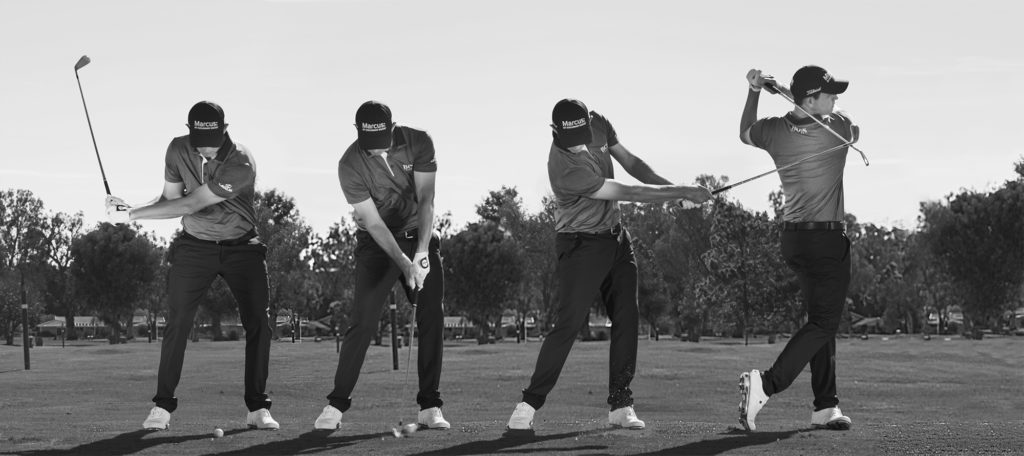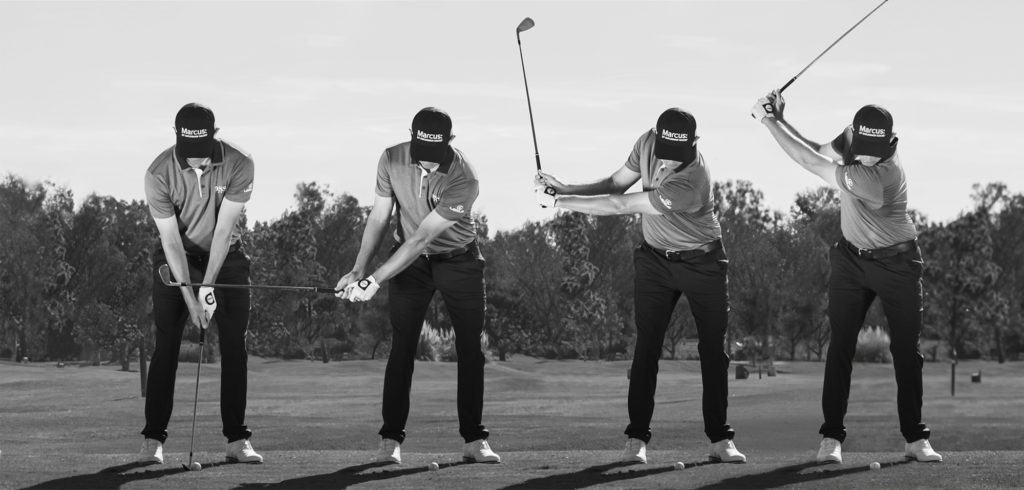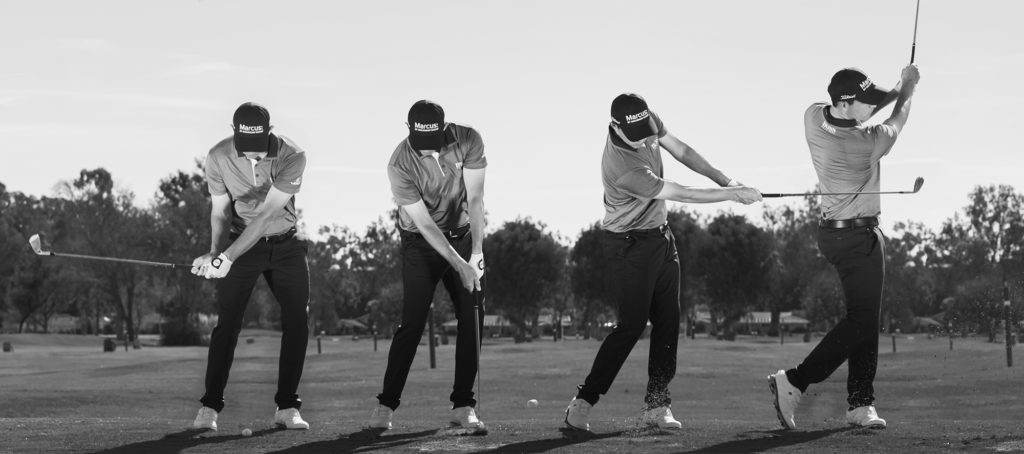Ball-striking advice from one of the game’s best
When Patrick Cantlay stands over a shot like the one you see here, his thought process might be very different than yours if you were faced with the same lie. But if your swing mechanics are fairly sound, adopting his approach might help you achieve better results on the course. For four straight seasons from 2017-2020, Cantlay finished in the top 20 on the PGA Tour in total strokes gained on the field each round, which is a testament to his ball-striking. “A lot of times I’m just picturing what window I want the ball to come out of, and then getting my body to produce that shot,” Cantlay says. “It’s more like I’m playing a game and less like I’m making a swing.” For Cantlay, sometimes that means hitting his stock iron shot because it’s his most reliable option [top row]. Other times he’s trying to flight the ball lower with an abbreviated swing [bottom row] or shape a shot around trouble. But no matter the lie, nothing happens before he sees the shot in his mind.


“It starts before you pick the club,” he says. “Then once you’ve picked out the shot you want to play and the club you’re going to use to do it, you have to be fully committed. For me, if it’s not a stock shot – not a normal shot, like it’s through the trees or a particularly difficult one – I’ll talk to my caddie and tell him what I’m thinking, for feedback. If he agrees, I’ll go through my routine to hit the shot. I’ll visualise it, and once I feel totally committed to it, I’ll hit it.”
‘“What is ball-striking? To me, it’s leaving the golf ball in the spot you wanted it to go.”’
Whether it’s a caddie, a matchplay partner, or just your inner voice, the part about talking it out and then committing is crucial, says Cantlay’s long-time coach, Jamie Mulligan. When your focus moves from your golf swing to creating shots, you put your mind closer to what psychologists refer to as the “ideal performance state”. In layman’s terms, it’s when your brain lets you access your athleticism without interference, Mulligan says. During his best swings, Cantlay describes that mental state as “not thinking at all”.
“I’ll play shots I know I have to hit on course when I’m on the driving range,” he says. And that’s a practice habit he’d recommend for you, too.
“Don’t go out to the range and try to make perfect golf swings,” he says. “Pick a target and pretend it’s a middle hole location or a back or front hole location. Then try to hit your irons high, low, medium – whatever the shot calls for.
“Try all those different shots, and hold yourself accountable for where the golf ball goes. You should always be trying to leave the ball in the right spot. That’s going to help you far more than just trying to make perfect golf swings.


“In general, club golfers have worked on their swings for hours and hours. You know how to swing to hit solid shots. But that’s not golf. To play good golf, you have to re-think the goal, which is to be accountable for where the golf ball goes. Don’t worry about anything else.”
Another benefit of thinking in this manner is that it gives you permission to be imperfect. Too often, golfers get down on themselves for poor execution, even when the result is good – like when a skulled shot skips out of a bunker and onto the green. Unlike average players, who often dismiss success when good luck seemingly played a major role in the outcome, you’ll get a wry smile out of a tour pro in the same scenario. Why? The game is hard, so they’ll take any breaks they can get, Mulligan says. Plus, Cantlay adds, they’ve seen their fair share of bad outcomes after hitting textbook shots.
“What is ball-striking? To me, it’s leaving the golf ball in the spot you wanted it to go,” Cantlay says. “When you hit a green in regulation, it doesn’t matter how you got it there. I don’t worry about making perfect contact, and I do this for a living. So why should you?”
PHOTOGRAPHS: by J.D. Cuban



